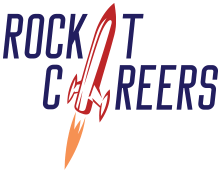I remember a time when a client came to me, frustrated, after multiple rounds of interviews without success. She was hiring for a product manager role, and despite interviewing several candidates, none seemed to fit. Her hiring team had used the traditional approach—resumes, phone screens, and structured interviews—but nothing clicked. I could sense her frustration as she described how every candidate looked great on paper but fell short when it came to real-world problem-solving.
As her recruiter, I knew it was time to change course. I suggested an alternative: using case interviews. This method would give the team a more hands-on look at how candidates think through complex problems and apply strategic solutions. Initially, she was unsure, but was open to trying something different given the lack of success with traditional interviews.
After integrating the case interview approach, everything shifted. The hiring team was finally able to see how candidates handled real-life scenarios. One candidate, in particular, stood out—not only did he present a solid solution, but his thought process, creativity, and ability to handle pressure were exactly what they needed. That hire ended up being a perfect fit, and it all came down to choosing the right interview style.
This experience reinforced the value of exploring alternative interview methods. It’s not always about finding the “best” candidate on paper; it’s about finding the right interview technique to uncover the candidate’s true potential.
When it comes to hiring, the traditional face-to-face interview has long been the gold standard. While these interviews can be effective in assessing a candidate’s skills, experience, and cultural fit, alternative interview styles are gaining traction in the corporate world. These methods, often more creative and flexible, offer deeper insights into a candidate’s potential by breaking away from rigid question-and-answer formats. Whether you are a hiring manager seeking new ways to evaluate talent or a candidate looking to better understand the process, it’s essential to explore these innovative interviewing techniques.
Here are some alternative interview styles that companies are embracing to enhance the hiring process:
1. Behavioral Interviews
Behavioral interviews focus on how a candidate handled situations in the past, using the belief that past behavior is a good predictor of future performance. Rather than asking hypothetical questions, interviewers ask candidates to share real-life examples of how they dealt with specific challenges, such as conflict resolution, leadership, or teamwork.
Example Question: “Can you give me an example of a time when you had to manage multiple projects under a tight deadline? How did you prioritize your tasks?”
This method offers a deeper understanding of how a candidate’s experience has prepared them for the role, rather than relying solely on theoretical knowledge.
2. Case Interviews
Primarily used by consulting firms, case interviews involve presenting candidates with complex, real-world business scenarios. Candidates are asked to solve problems or provide strategic recommendations based on the situation. This style is especially popular in industries where analytical thinking and problem-solving are critical.
Example Case: “A mid-sized retail company is facing declining sales due to increased competition from online marketplaces. How would you approach this problem to help the company regain market share?”
Case interviews allow interviewers to see how candidates think on their feet, analyze data, and apply practical solutions. It provides insights into their problem-solving and decision-making abilities under pressure.
3. Panel Interviews
In a panel interview, a candidate meets with several interviewers at once, often from different departments within the organization. This style allows a group of stakeholders to assess a candidate from various angles, ensuring a more holistic evaluation. Panel interviews are particularly useful for roles that require collaboration across teams, as they simulate the candidate’s ability to handle diverse input and perspectives.
The panel might include a potential supervisor, a peer, and someone from HR, each asking questions related to their area of expertise. This ensures the candidate’s compatibility across multiple facets of the organization.
4. Group Interviews
Group interviews involve several candidates being interviewed simultaneously. This method is often used for roles that require strong interpersonal skills or teamwork, as it allows employers to see how candidates interact with each other in a collaborative or competitive environment.
During a group interview, candidates may be asked to work together on a task, such as solving a problem or pitching a new idea. Interviewers can observe not just the individual’s responses, but also their ability to communicate, negotiate, and lead in a group setting.
Example Task: “Work with the other candidates to develop a marketing strategy for a new product launch. Present your solution to the interview panel.”
Group interviews provide a more dynamic perspective on a candidate’s social and leadership skills, which are often difficult to gauge in traditional one-on-one interviews.
5. Video Interviews
Video interviews, particularly popular in remote hiring processes, have become even more prevalent with the rise of remote work. These interviews are conducted via platforms like Zoom, Microsoft Teams, or Skype. While video interviews may seem like a digital version of the traditional format, they offer unique benefits, such as the ability to interview candidates from different geographic locations, reducing travel costs and time constraints.
For some roles, companies may even use asynchronous video interviews, where candidates record responses to a set of pre-determined questions. This allows interviewers to review the recordings at their convenience, increasing scheduling flexibility.
6. Technical Interviews
For roles that require specific technical skills, such as software engineering, data analysis, or graphic design, technical interviews are used to assess a candidate’s proficiency in relevant tools, technologies, or coding languages. Candidates may be asked to complete a technical test, coding challenge, or design project as part of the interview process.
Example Challenge: “Write a program that solves a specific problem in Python within a given time frame.”
Technical interviews are highly effective for evaluating a candidate’s hands-on expertise, ensuring that they have the skills required to succeed in the role.
7. Competency-Based Interviews
Competency-based interviews assess whether a candidate has the specific skills or competencies needed for the job. Rather than focusing on past experience or behavior, these interviews evaluate whether candidates possess the necessary qualities, such as leadership, communication, adaptability, or initiative.
Example Question: “Describe a situation in which you demonstrated strong decision-making skills.”
This approach helps companies align candidate capabilities with the core competencies needed to succeed in the role and the organization.
8. Stress Interviews
In stress interviews, candidates are placed in challenging or uncomfortable situations to see how they handle pressure. While this method is not widely used, it can be helpful for high-stakes roles where stress management is critical, such as in emergency response or finance.
Interviewers may ask intentionally difficult or confrontational questions or set up hypothetical scenarios designed to create tension. The goal is to observe how candidates react, how they stay composed, and how they manage stress.
Example Scenario: “The project you’ve been working on for six months has just been rejected by the client. How would you handle this situation?”
While controversial, stress interviews can reveal how candidates cope with adversity and difficult circumstances.
9. Job Auditions or Trials
In job auditions, candidates are given an opportunity to “try out” the role for a short period—anywhere from a few hours to a few days. This method, popular in industries like sales, hospitality, and retail, allows employers to see how candidates perform in real-world job scenarios.
Example: For a marketing position, a candidate might be asked to create a social media campaign for a product launch, giving the employer a firsthand look at their creativity and execution.
Job auditions offer a more practical way to assess skills in action, providing a true test of how a candidate will function in the role.
10. Competitions or Hackathons
Particularly in the tech industry, hackathons and competitions are used to assess candidates’ problem-solving, creativity, and technical abilities. In these events, individuals or teams are tasked with creating solutions to real-world challenges in a limited time frame.
For example, a tech company may host a coding competition where candidates must develop an app or solve a software issue. These events offer a high-energy, collaborative environment where candidates can showcase their innovation and teamwork skills.
As the job market evolves, so do the methods used to identify and assess top talent. The rise of alternative interview styles reflects the need for more dynamic, flexible approaches to hiring that go beyond the limitations of traditional interviews. These alternative methods offer deeper insights into candidates’ abilities, from their technical prowess to their problem-solving, communication, and leadership skills.
By incorporating a variety of interview techniques, employers can ensure a more comprehensive and fair assessment of each candidate’s potential, ultimately leading to better hiring decisions. For job seekers, understanding these alternative methods can provide a competitive edge, enabling better preparation and performance in the modern hiring landscape.

